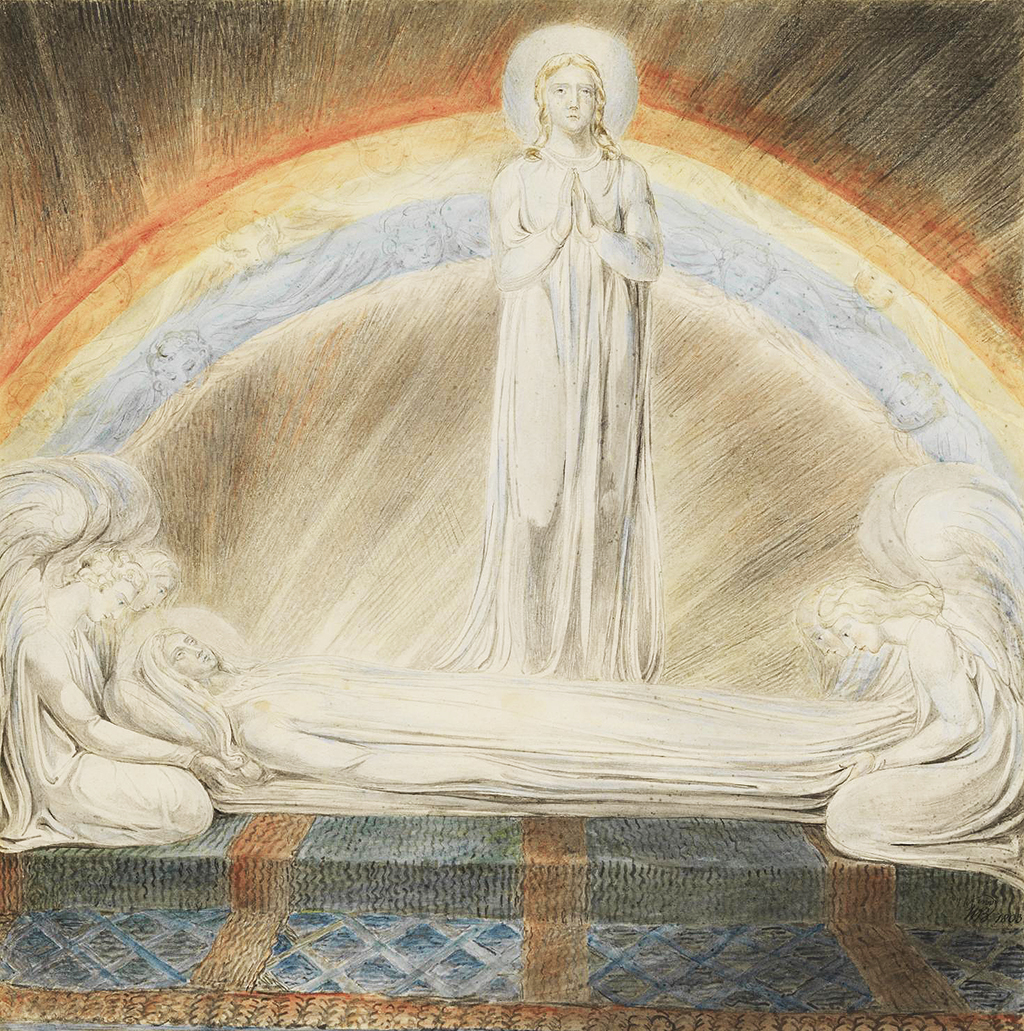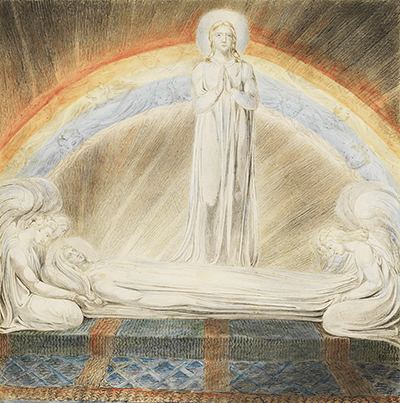The Death of the Virgin was completed in 1803 by William Blake, an artist and poet from the UK. He was proficient in the use of watercolour which was a popular medium within the country at that time.
This particular artwork is believed to have been produced for Thomas Butts who would become an important patron for Blake. The scene is bright and entirely uplifting, but just a few years before creating this painting the artist was considerably darker in his approach. He would therefore go through a transition in which he worked and practiced his use of lighting and colour, seeking a new direction that could breathe new life into his oeuvre. He succeeded, as one would expect of this genius, and he would continue to provide work for Butts who approved of his new artistic direction. Whilst his darker pieces were technically impressive, it is perhaps the brighter period which resonated most with the public who wanted to fill their lives with colour and joy, rather than an introverted self-reflection. The Impressionists some years later would achieve similar results in their studies of the impact of light and shade on different objects over a period of time.
This dramatic scene captures a figure standing tall with a bright rainbow stretched across the background. Below are a number of angels mourning the death of another figure who lays motionless on the floor, in a position akin to burial with arms by the side. Much research has been carried out into this painting, which was produced using watercolour and marked an important stylistic chapter in the artist's development. This powerful piece is around 38cm in height and width, and was gifted to the Tate as far back as 1949 by W. Graham Robertson, via his will. The institution continues to receive highly generous donations in this manner even today, partly from those who have really appreciated its galleries over their own lifetimes. The artist would discuss The Death of the Virgin within a series of letters as he corresponded with his patron for a larger project that included several other related designs.
The Death of the Virgin is now owned by Tate, a major art institution based in the UK. They have a wealth of art dating back centuries and display it across a variety of galleries based across the UK. Alongside a number of other important artworks from this artist's career, they also offer highlights such as The Magic Circle by John William Waterhouse, Snow Storm: Steam-Boat off a Harbour's Mouth by William Turner, Ophelia by Sir John Everett Millais and also Joshua Reynolds's The Age of Innocence. Tate Modern and Tate Britain are the two most important galleries in which their best work is displayed, but in recent years there have also been new galleries opened outside of London in order to allow a larger proportion of the population to see other parts of the collection in their local communities.





